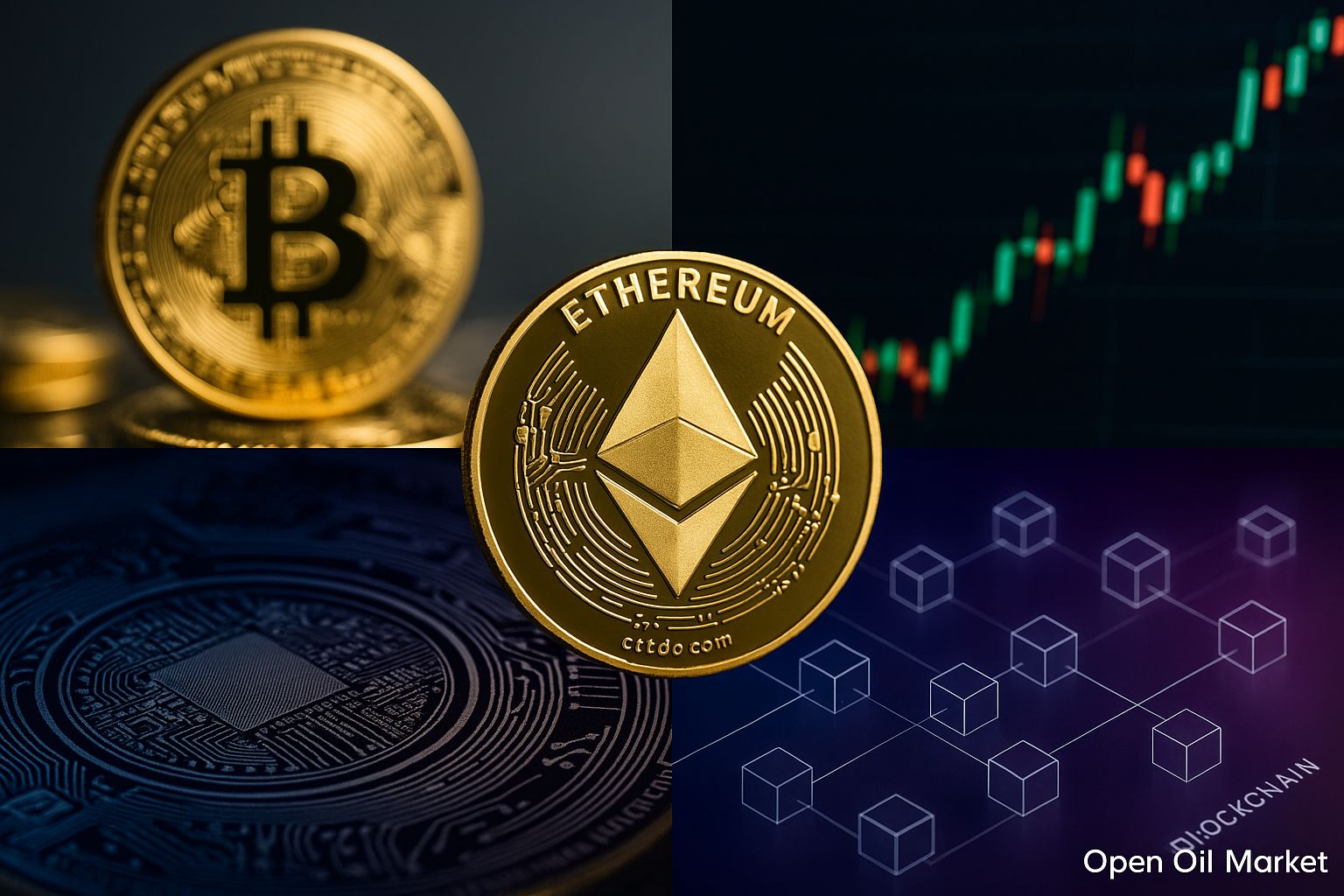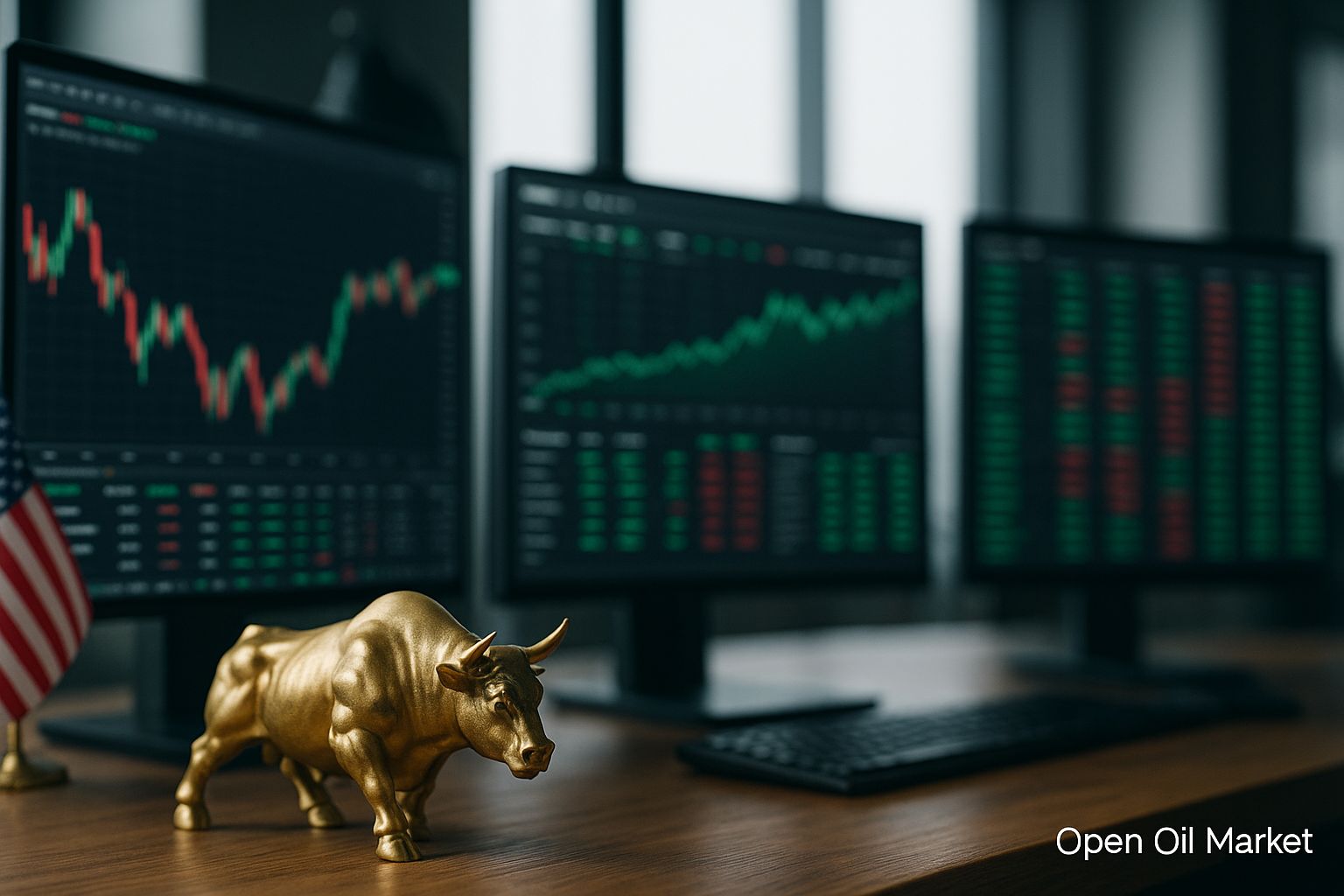
Current Startup and Venture Capital News as of August 27, 2025: Record AI Rounds, Return of Mega Funds, IPO Revival, Growth of Crypto Startups and Defense Technologies, Market Consolidation, and Development of the CIS Ecosystem.
Wednesday, August 27, 2025, marks a series of significant events in the world of startups and venture capital investments. The focus remains on unprecedented funding rounds in artificial intelligence (AI) and the ongoing global wave of IPOs among technology companies. Simultaneously, the return of large venture funds (mega funds) and industry consolidation through major mergers and acquisitions (M&A) are coming to the forefront. There is an increasing activity in the sectors of cryptocurrencies, defense technologies, robotics, and other innovative industries, signaling further revitalization of the venture market.
Venture activity is on the rise in all regions. The **U.S.** continues to confidently lead (with a significant portion of investments directed towards the AI sector), while startup funding volumes in the **Middle East** have doubled, and in **Europe**, there has been a shift: Germany has for the first time surpassed the UK in the number of venture deals. **India**, **Southeast Asia**, and other emerging markets are attracting record amounts of capital, while in **China**, activity remains more subdued due to regulatory risks. The startup ecosystems in the **CIS** countries are also striving to keep pace despite external restrictions. A new global venture boom is forming, although investors continue to approach deals selectively and cautiously. Let’s take a closer look at the key trends and news shaping the agenda for August 27, 2025.
New Mega Rounds and Unicorns in AI
In 2025, venture investments in AI companies have reached unprecedented levels. It is estimated that since the beginning of the year, AI startups have attracted over $120 billion—about half of all global venture funding, already surpassing the total for all of 2024. Investors worldwide are eager to invest in the most promising AI projects, leading to multi-billion dollar deals and sharp rises in company valuations. Among the largest recent rounds:
- OpenAI (USA) — secured a record $40 billion investment from a consortium led by SoftBank and Microsoft; this deal became one of the largest in the history of the tech sector.
- Anthropic (USA) — is nearing the closure of a round totaling ~$5 billion at a valuation of around $170 billion; the developer of "safe AI" is already among the world's most valuable startups.
- Scale AI (USA) — received $14.3 billion in financing from Meta and partners to scale up its data processing and AI model training platform.
- xAI (USA) — Elon Musk's new AI startup attracted about $5 billion (the round was led by SpaceX), demonstrating corporate investors' interest in promising players in the sector.
- Databricks (USA) — signed an agreement to raise ~$1 billion as part of its Series K round at a valuation exceeding $100 billion, solidifying its status as one of the world's most valuable private AI developers.
These impressive mega rounds reflect investors' massive appetite for AI. Capital is flowing heavily into the development of large language models, generative AI, robotics, and related technologies capable of radically transforming entire industries. The valuation of sector leaders has increased several times in a short period, and the competition among funds for promising AI projects has reached a critical level.
Venture Funds on the Rise
The amount of available capital in the venture market is rapidly increasing alongside the industry's revival. It is estimated that in the first half of 2025, global investments in startups reached around $190 billion—25% more than the previous year. The industry is consolidating: several major venture firms have attracted over half of all new funds, closing record-sized funds. Leading players in Silicon Valley are ramping up bets on breakthrough sectors (AI, fintech, biotech, etc.), while corporate investors and sovereign funds from various countries are becoming increasingly involved in venture capital. The mega funds—huge investment funds ready to support future technologies—are effectively making a comeback. Here are some representative examples:
- SoftBank Vision Fund III — the Japanese conglomerate SoftBank launched a new fund of ~$40 billion, primarily focused on investments in AI, robotics, and other advanced technologies.
- Andreessen Horowitz (a16z) — the renowned venture firm is raising a mega fund of around $20 billion, mainly aimed at funding late-stage American AI startups.
- Middle Eastern Sovereign Funds — the sovereign wealth funds of the Gulf countries are increasingly injecting billions into tech projects globally while developing their own mega programs to support startup ecosystems in the Middle East.
Leading investment players currently possess unprecedented reserves of uninvested capital ("dry powder")—over $300 billion in the U.S. alone is available for investment as market confidence grows. The influx of such "big money" saturates the startup ecosystem with liquidity, intensifying the competition for the best deals while simultaneously strengthening confidence in further capital influx and support for promising innovations.
The IPO Market is Reviving
After a long pause, tech companies are once again successfully going public. The year 2025 has been marked by a series of successful IPOs that have restored optimism among venture investors regarding their exit opportunities. Since the beginning of the year, approximately 225 IPOs have occurred on U.S. exchanges—about 85–86% more than the same period in 2024, indicating a notable revival of the market. Some of the largest recent listings include:
- Figma (USA) — the cloud-based design software developer debuted on the NYSE with a valuation of around $18 billion; high investor demand allowed shares to be placed above the forecast range and ensured significant stock price growth on the first trading day.
- Circle (USA) — the issuer of the USDC stablecoin conducted its long-awaited listing in June; the company's capitalization now exceeds $40 billion, and shares have risen more than 5 times from the IPO price.
- CoreWeave (USA) — a supplier of cloud infrastructure for AI successfully went public in the spring (~$30 billion valuation) and reached a capitalization of around $52 billion by the end of summer, more than doubling its stock price due to high demand for AI resources.
The success of these debuts restores faith in the public market as an "exit" mechanism for venture projects. Observing the growth in stock prices of new issuers, many late-stage startups are once again considering IPOs as a viable development option, preferring them to subsequent private rounds. Companies from various sectors (including the crypto industry) looking to establish success in the stock market are lining up to take advantage of the newly opened "window" with upcoming listings expected in the coming months.
Crypto Startups Experience a Renaissance
The rise in the cryptocurrency market in 2025 has led to a resurgence of interest in blockchain startups and fintech projects related to digital assets. **Bitcoin** has approached its historical peak (around $120,000), instilling optimism in the industry and marking the beginning of a new "crypto spring" following an extended downturn. Against this backdrop, several significant market players are stepping back into the spotlight:
- Gemini — the cryptocurrency exchange established by the Winklevoss twins has filed a confidential IPO application, seeking to raise capital for international expansion.
- BitGo — the American provider of digital asset custody services aims to go public, leveraging the growing demand from institutional investors for crypto infrastructure.
In the private sector, venture funding for blockchain projects is also gradually reviving compared to the "crypto winter" of previous years. Investors are once again willing to take risks in the fields of DeFi, cryptocurrency exchanges, and Web3 infrastructure, anticipating greater regulatory clarity and mass adoption of crypto technologies. While transaction volumes in this segment still fall short of the records set in 2021, a clear trend toward recovery has emerged. New funds focused on digital assets are appearing, and successful IPOs of specialized companies could attract even more capital into the sector.
Defense Technologies and Robotics Attract Capital
The geopolitical landscape and technological breakthroughs are stimulating investment growth in the defense, aerospace, and robotics sectors. Startups creating solutions for security and military applications are receiving funding not only from private venture funds but also with the support of government programs. Some notable deals in this direction include:
- Anduril (USA) — the defense systems developer based on AI raised approximately $2.5 billion to expand the production of autonomous drone platforms and surveillance systems. This round became one of the largest of the year, showcasing investor confidence in next-generation military technologies.
- Stark (Germany) — the startup developing autonomous strike drones secured $62 million (the round was led by Sequoia Capital with participation from the NATO Innovation Fund and others) at a valuation of approximately $500 million. The involvement of NATO and strategic investors underscores the significance of drone systems in the modern market.
In addition to strictly military projects, venture capital is also flowing into adjacent areas such as humanoid robots, cybersecurity, and space technologies. For instance, the American startup Figure AI recently raised about $1.5 billion to develop humanoid robotics platforms. Interest in satellite constellations and commercial space launches remains consistently high. Long-term security needs make defense technologies one of the fastest-growing sectors in venture capital.
Asian Boom and New Regional Players
The geography of venture financing is expanding due to a surge of activity in **Asia** and capital inflows from emerging markets. In the first half of 2025, Japan recorded 33% more venture deals than the previous year, while India saw a 23% increase. This was fueled by the launch of new corporate funds and government programs supporting innovation. **China**, having gone through a period of uncertainty, is also showing signs of revival thanks to investments in priority technologies despite ongoing regulatory restrictions.
Meanwhile, investors from the **Middle East** are becoming more active: their sovereign funds are increasingly participating in major international rounds, intensifying competition for promising startups on the global stage. New technology hubs are also forming on other continents. In particular, the number of promising startups and local funds is increasing in **Africa** and **Latin America**, attracting the attention of the global venture community. The global investment boom is spreading to these new markets, gradually leveling the distribution of capital worldwide.
Market Consolidation and M&A Deals
High valuations of startups and intense competition for new markets are driving the industry toward consolidation. Major mergers and acquisitions are once again coming to the forefront, reshaping the balance of power in the technology sector. For example:
- Google + Wiz — Google has agreed to acquire the Israeli cloud cybersecurity startup Wiz for approximately $32 billion. This record amount for the Israeli industry signals that tech giants are willing to spend significant sums on key cyber technologies.
- SoftBank + Ampere — SoftBank plans to acquire the American processor developer Ampere for about $6.2 billion; this deal could become one of the largest of the year in the semiconductor segment and strengthen SoftBank's position in the chip industry.
Such mega-deals demonstrate the eagerness of tech giants to acquire cutting-edge developments and strong teams. This activation in the field of acquisitions and strategic investments indicates market maturation: successful late-stage startups either merge with each other or become targets for corporations, while venture capitalists gain long-awaited opportunities for profitable exits. The wave of consolidation promises accelerated growth for the most promising companies and returns large capital to the venture ecosystem.
The Russian Market: Adaptation and Growth After Decline
The Russian venture industry, which has experienced several challenging years, is gradually emerging from its "venture winter" and adapting to new conditions. Despite international restrictions and capital outflows, stabilization was already noted in 2024, and by the end of 2025, market participants expect further revitalization. Domestic investors are launching new funds and initiatives aimed at supporting local projects, while many Russian founders are seeking success abroad. Some examples of current trends:
- Kama Flow — an investment company that announced the launch of a new venture fund of 10 billion rubles aimed at financing high-tech late-stage startups in the spring. This is one of the largest venture funds in recent years in the country, designed to fill the gap for large capital in the local market.
- Qummy — a food tech startup from Krasnodar attracted ~440 million rubles from a group of private investors at a valuation of about 2.4 billion rubles. This round indicates a return of interest from local venture funds and banks in promising projects in the domestic market.
- Plata — a fintech startup founded by former top managers of "Tinkoff," achieved a valuation of ~$3.3 billion in the international market. The company, which is developing a digital banking business in Latin America, is preparing for a new round at a valuation more than twice last year's and has already received banking licenses in Mexico and Colombia. This case shows that teams from Russia can build global-level "unicorns" even under conditions of restrictions in the domestic market.
Overall, the venture ecosystem in the CIS countries is undergoing a phase of restructuring: the focus is shifting towards projects in IT, artificial intelligence, import substitution, and B2B services for large businesses. Experts note that the local market is gradually adapting to new realities. The most resilient teams continue to attract funding, and new deals are being made even at the seed stage. As the economy stabilizes and internal institutions supporting innovations develop, venture investments in the region have a chance for progressive growth and closer integration with global trends.




